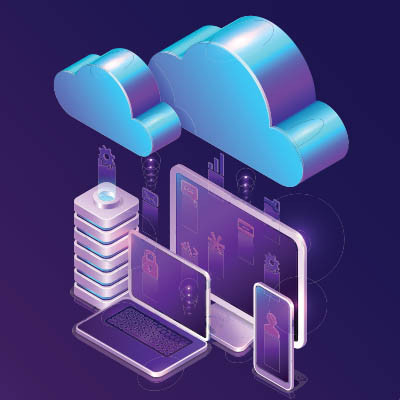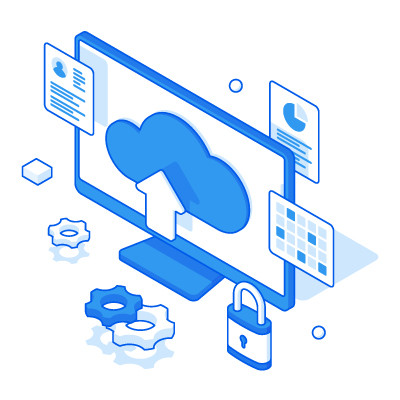Does this sound familiar? Your business is growing, but you haven’t changed your server hardware since you began operations. It’s hindering growth at this point, and you don’t know what to do. The best solution out there is to turn to the cloud. With the right implementation of a cloud-first model, you can effectively future-proof your business so it can grow unhindered.
Network Integration Specialists, Inc. Blog
It is remarkable how much more capacity our data storage tools have than they had upon their initial invention, and how much data we’ve amassed in that time. The first-ever commercial hard drive was the size of two refrigerators, and held a mere five megabytes of data. For context, that’s about five photographs. Today, hard drives hold exponentially more data, and it is critical that you are doing everything you can to protect this data from any circumstance, from fire, severe weather, or cyberattack.
So, are you? Too many business owners aren’t sure… but there’s a way you can be.
We often publish articles about the cloud and how it’s impacting the world of business, but one thing you can never get away from is how important security is to this mission. Regardless of the use, the cloud is only helpful if it’s secure, and it can actively hold your business back if you neglect this important aspect of its operations.
The cloud is one of those solutions that you’re either taking full advantage of or you have yet to experience the true benefits it can provide. If you’re still on the fence about cloud migration, we have news for you; this decision is actually costing you in the long term. We recommend you explore the possibility of cloud migration by considering why you’re so worried about it in the first place (and why that doesn’t make sense).
The cloud is an essential piece of technology for any modern business, but how much do you actually know about the cloud in 2025? Any business can leverage the cloud, from small businesses to large enterprises. Let’s discuss what the cloud is, what it does, and how it can help your business reimagine its operations.
Data storage is hardly the most interesting topic out there, but it’s one that your business needs to consider if it’s going to flourish in the modern era. The cloud offers you real benefits from traditional on-premises file storage, all while being cheaper and more efficient. Let’s take a look at three reasons you might consider cloud storage over in-house infrastructure for your company’s data storage needs.
Think about the apps you use daily—Google Drive, Netflix, Spotify, even Instagram. All of these run on cloud-based services, which basically means they store and process everything online instead of relying on one physical device. Businesses, big and small, are making the same shift because, honestly, it just makes sense. Let’s take a look at why you should be looking to use cloud services in your business.
The holidays and the new year are perfect times to reflect on how you can make your team’s jobs easier and more efficient. One way you can do so is by opening up the option for remote or hybrid work, provided their roles can be removed from the office, either part time or full time. Today, we want to highlight some of the tools that a remote workforce needs to be successful—as well as how you can get them.
Cloud computing as a whole has been one of the most transformative technologies for businesses. With so many companies (upward of 90 percent of modern businesses) using some type of cloud computing, more companies than ever are really leaning into the technology and use it for mission critical business processes. Let’s take a look at some of the ways businesses can secure their cloud resources.
Cloud computing has become a common tool, especially Software-as-a-Service (SaaS). Hosted software provides robust options that make sense to all companies, including anytime-anywhere availability, scalability, and provider management of the underlying hardware. In today’s blog, we want to discuss a couple of tips people can use when working with cloud computing.
Other than the innovative jump from tape, data backup hasn’t seen too many great leaps forward, so to speak. Sure, businesses don’t have to worry about resource-intensive manual backups anymore, but the standard approach is so rock-solid that innovation isn’t necessarily needed at this point. Today, we are exploring the backup and disaster recovery process and how modern-day solutions have made an effective tool even better.
In today's ever-changing business environment, effective cost management in IT infrastructure is more crucial than ever. Companies are facing the challenge of balancing the benefits of cloud computing with the reliability and control of on-premise solutions. This post is all about managing IT costs effectively while leveraging the strengths of both cloud services, like Microsoft 365 for email hosting, and on-premise servers for secure document storage.
The cloud has proven to be an extremely useful tool for the modern business. Not only does it provide anywhere-anytime access to applications, processing, storage, et al; it also delivers those products as a service, allowing you to budget for recurring costs rather than major upfront ones. This provides your organization with functional, supported, and secure computing environments that eliminate a lot of the support costs that traditional computing environments require. It sounds like a perfect scenario for small and large businesses alike, but things aren’t always what they seem, as a lot of cloud users have found that they have incurred several hidden costs by using cloud platforms. Today, we take a look at these hidden costs.
Profitability is less the measure of being able to turn a profit, and more the measure of how much profit you can make. For the successful small business, the integration of technology can dictate what kind of annual margins you are looking at. For the new company, however, it can be something even more critical: the difference between setting a course for success, or wallowing in failure. Today we analyze the cost difference between hosting your IT in-house, or choosing to host it in the cloud.














